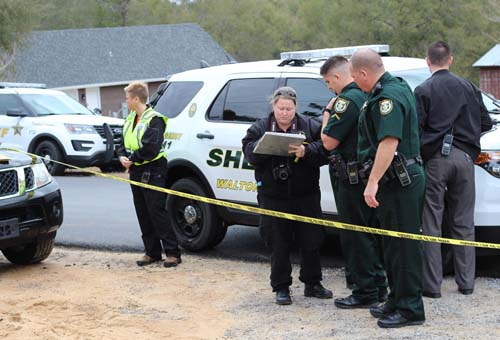


Understand, recognize, and investigate cases involving missing and abducted children. Determine scope and scale issues and how to manage a missing or abducted child case. Explore crime scene evidence collection and processing, profiling suspects, and legal issues, including search warrants and interrogation related to a missing or abducted child.

Network scanners like Fing are valuable tools in investigative work, particularly for cyber related investigations. These tools can also be invaluable to personal communities in assisting with device and network security, and network management. Network scanners allow users to scan and map a network, identifying all connected devices, their IP addresses, and other essential details like MAC addresses, device types, and open ports. For forensic investigators, tools like Fing can provide a snapshot of all devices connected to a network at a particular time, useful in tracing the origins of a security incident. For home users, network scanning tools can help map out their homes to ensure no outside devices are connected, can be used in hotels or rentals to map devices in unknown properties. Overall, network scanners are essential in proactive network defense and incident response or investigations.

Explore the history and development of the New Jersey Child Abduction Response Team (CART) model, mandated by law and recognized as a highly effective response and recovery tool for missing and abducted children. Examine the inception of the NJ CART model, and analyze the methods used to identify and engage stakeholders while overcoming challenges. Understand the composition of the team, including its directives, manuals, criteria, and command structure. Investigate the CART's first activation and evaluate several subsequent successful child recovery cases, gaining insight into this proven approach to missing children investigations.

Explore the challenges involved with no body homicide investigations. Most start as missing persons cases; the suspect’s head start coupled with the absence of the victim’s body leaves gaping holes in the investigation. Join us to hear from experienced instructors as they provide the framework and tools to build a prosecutable circumstantial case—regardless of the age of the case—from proving the victim is dead using established practices such as victimology, interviews, documents/records/digital footprint to search strategies and best practices in documentation. This training will also provide established prosecution strategies that maximize the likelihood of success. During instruction, there will be an opportunity to share your case as a class participation case study exercise.

The opioid crisis and the flood of other drugs has reached epidemic proportion in many of our communities. Join us to learn more about this national challenge and other emerging drug trends such as fentanyl, heroin, cocaine, methamphetamines, synthetic cannabinoids, and other chemicals. Explore the issues associated with the legalization of marijuana in many states and vaping, butane hash oil, and cannabis edibles. Gain an understanding of the stages of use, addiction, withdrawal symptoms, and the health and life-threatening dangers posed from the use of drugs. Discuss common delivery systems and observe examples of emerging drugs in various forms. Learn how to recognize the signs and symptoms of drug usage, as well as how Naloxone/Narcan works in cases of opioid overdoses.

Gain an introduction into the psychology, or mindset, of those that commit sexually motivated crimes. Learn about sex offender typologies and patterns of behavior. Explore the relationship between paraphilia such as exhibitionism, voyeurism, and fetishism and criminal acts. Review and dissect real case examples to gain insight into offender modus operandi. Knowledge obtained can be applied during interview and interrogation to help resolve sexually motivated cases.

Develop and enhance the skills of the 21st Century criminal justice instructor or trainer. Examine how adults learn and explore effective instructional methods. Develop a structured learning plan, apply adult-learning techniques, utilize instructional technology, evaluate learner retention strategies, and the legal implication of instruction.

Examine the importance of multidisciplinary team (MDT) case coordination and evidence corroboration in the investigation of child abuse cases. Various members of the Multidisciplinary Team, such as law enforcement, child protective services, and forensic interviewers may gather different or differing information. Learn how to evaluate evidentiary findings through crime scene images, interviews and case studies. Understand multidisciplinary team members' roles and responsibilities for protecting child victims and prosecuting offenders. Focus on offenders’ use of technology, including the use of child sexual abuse material (CSAM) in grooming and manipulation. Discuss a variety of technology that can be used by investigators.

The opioid crisis and the flood of other drugs has reached epidemic proportion in many of our tribal communities across the nation. Learn to recognize the signs and symptoms of use or misuse of opiates, heroin, methamphetamines, cocaine, other stimulants, hallucinogens, marijuana, synthetic cannabinoids, alcohol and other depressants, inhalants, dissociative anesthetics, other chemicals and various drug combinations. Review updated trends on Fentanyl, Fentanyl laced pills, heroin, cocaine, methamphetamines, synthetic cannabinoids, Butane hash oil, vaping, and cannabis edibles.

This training course provides participants with practical verbal de-escalation techniques to diffuse conflicts and reduce the potential for violence. Participants will gain the skills needed to recognize the factors that contribute to anger and violence in the workplace, identify behaviors and warning signs of anger and conflict, and recognize individuals in crisis. The course emphasizes the importance of safety considerations during de-escalation and provides verbal and non-verbal communication techniques essential for effective conflict resolution. Participants will leave this training equipped with the knowledge and skills to effectively de-escalate conflicts, maintain safety, and foster a more harmonious workplace.
